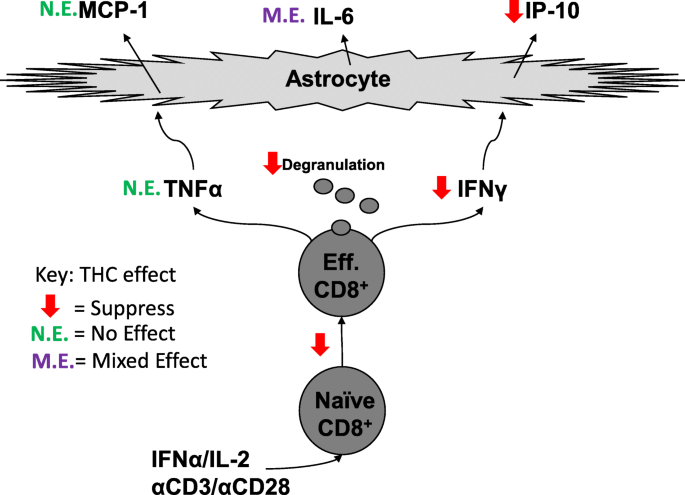 “Cannabis has been used for thousands of years in many cultures for the treatment of several ailments including pain.
“Cannabis has been used for thousands of years in many cultures for the treatment of several ailments including pain.
The benefits of cannabis are mediated largely by cannabinoids, the most prominent of which are tetrahydrocannabinol (THC) and cannabidiol (CBD). As such, THC and/or CBD have been investigated in clinical studies for the treatment of many conditions including neuropathic pain and acute or chronic inflammation.
While a plethora of studies have examined the biochemical effects of purified THC and/or CBD, only a few have focused on the effects of full-spectrum cannabis plant extract. Accordingly, studies using purified THC or CBD may not accurately reflect the potential health benefits of full-spectrum cannabis extracts.
Indeed, the cannabis plant produces a wide range of cannabinoids, terpenes, flavonoids, and other bioactive molecules which are likely to contribute to the different biological effects. The presence of all these bioactive molecules in cannabis extracts has garnered much attention of late especially with regard to their potential role in the treatment of neuropathic pain associated with multiple sclerosis.:
Herein, the current knowledge about the potential beneficial effects of existing products of full-spectrum cannabis extract in clinical studies involving patients with multiple sclerosis is extensively reviewed. In addition, the possible adverse effects associated with cannabis use is discussed along with how the method of extraction and the delivery mechanisms of different cannabis extracts contribute to the pharmacokinetic and biological effects of full-spectrum cannabis extracts.”
https://www.ncbi.nlm.nih.gov/pubmed/32239248
https://link.springer.com/article/10.1007%2Fs00011-020-01341-1

 “Medicinal use of
“Medicinal use of  “The aim of this study was to explore the effect of health-care providers’ attitudes towards the medical use of
“The aim of this study was to explore the effect of health-care providers’ attitudes towards the medical use of  “Considering data from in vitro and in vivo studies,
“Considering data from in vitro and in vivo studies,  “Since antiquity, Cannabis has provoked enormous intrigue for its potential medicinal properties as well as for its unique pharmacological effects.
“Since antiquity, Cannabis has provoked enormous intrigue for its potential medicinal properties as well as for its unique pharmacological effects. “There is concern that recreational marijuana legalization (RML) may lead to increased
“There is concern that recreational marijuana legalization (RML) may lead to increased  “The endocannabinoid system (ECS) comprises the canonical receptor subtypes CB1R and CB2R and endocannabinoids (anandamide, AEA and 2-arachidonoylglycerol, 2-AG), and a “non-canonical” extended signaling network consisting of: (i) other fatty acid derivatives; (ii) the defined “ionotropic cannabinoid receptors” (TRP channels); other GPCRs (GPR55, PPARα); (iii) enzymes involved in the biosynthesis and degradation of endocannabinoids (FAAH and MAGL); and (iv) protein transporters (FABP family).The ECS is currently a hot topic due to its involvement in cancer and pain.
“The endocannabinoid system (ECS) comprises the canonical receptor subtypes CB1R and CB2R and endocannabinoids (anandamide, AEA and 2-arachidonoylglycerol, 2-AG), and a “non-canonical” extended signaling network consisting of: (i) other fatty acid derivatives; (ii) the defined “ionotropic cannabinoid receptors” (TRP channels); other GPCRs (GPR55, PPARα); (iii) enzymes involved in the biosynthesis and degradation of endocannabinoids (FAAH and MAGL); and (iv) protein transporters (FABP family).The ECS is currently a hot topic due to its involvement in cancer and pain. “CD8+ T cells can contribute to neuroinflammation by secretion of inflammatory cytokines like interferon γ (IFNγ) and tumor necrosis factor α (TNFα). Astrocytes, a glial cell in the brain, can be stimulated by IFNγ and TNFα to secrete the inflammatory cytokines, monocyte chemotactic protein 1 (MCP-1), interleukin 6 (IL-6), and interferon-γ inducible protein 10 (IP-10).
“CD8+ T cells can contribute to neuroinflammation by secretion of inflammatory cytokines like interferon γ (IFNγ) and tumor necrosis factor α (TNFα). Astrocytes, a glial cell in the brain, can be stimulated by IFNγ and TNFα to secrete the inflammatory cytokines, monocyte chemotactic protein 1 (MCP-1), interleukin 6 (IL-6), and interferon-γ inducible protein 10 (IP-10).